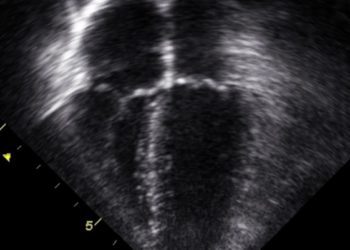In-flight medical emergencies: syncope, respiratory, and gastrointestinal most common
Image: PD
1. Medical emergencies occur at a rate of approximately 16 emergencies per one million passengers; the most common of which are syncope, respiratory symptoms, or nausea/vomiting.
2. Approximately one third of in-flight medical emergencies are resolved entirely before the flight lands. The death rate of all in-flight medical emergencies was 0.3%.
3. Based on these data, the study authors provide basic guidelines for responding to in-flight medical emergencies.
Evidence Rating Level: 2 (Good)
Study Rundown: This study examined the incidence and outcomes of in-flight medical emergencies across several airlines and characterized the assistance provided by on-board medical personnel. The authors performed a logical study that examined calls to emergency communication centers by 5 commercial airlines. The most common emergencies were syncope, respiratory symptoms or nausea/vomiting. The article details liability concerns of medical responders on flights (specifically that anything short of willful neglect is covered by the Aviation Medical Assistance Act). The authors also provide a basic algorithm for medical responders to follow in the event of an in-flight medical emergency and encourage familiarity in evaluating the most common complaints. The study serves as an initial survey in the realm of in-flight medical emergencies but further work will be required to identify break-down points in patient care in order to ultimately improve outcomes.
Click to read the study, published today in the New England Journal of Medicine
Relevant Reading: Surgical and Medical Emergencies on board European Aircraft
In-Depth [retrospective cohort study]: The study examined records from 5 commercial airlines between 2008 and 2010. The authors recorded data from each incident specifying: the type of medical emergency, the level of training of the responder, the medical assistance provided, and the resulting patient outcome. Where data were available, the authors also followed hospitalization course and outcome. They found that medical emergencies occur on approximately 1 in 600 flights, and the most common problems are syncope or presyncope, respiratory complaints, and nausea/vomiting. Only 7.3% of emergencies caused their flights to divert early. Physicians responded most commonly (48%) followed by nurses (20%) and EMS (4%). 31% of emergencies resolved during the flight and required no further assistance. Only about one third of those met by EMS were transported to the hospital. The overall death rate for all in-flight medical emergencies was 0.3%.
By Akira Shishido, M.D., and Mitalee Patil
More from this author: Pneumocystis linked to sudden infant deaths, Continuous infusion of beta-lactams may be superior to bolus therapy, Novel antiviral drug reduces influenza viral load, Three months of antibiotics appear to effectively treat early-onset spinal implant infections, [Physician Comment] Recurrent early Lyme disease is caused by reinfection, not relapse, Hospital Acquired MRSA pays no attention to vancomycin effectiveness
© 2013 2minutemedicine.com. All rights reserved. No works may be reproduced without written consent from 2minutemedicine.com. Disclaimer: We present factual information directly from peer reviewed medical journals. No post should be construed as medical advice and is not intended as such by the authors or by 2minutemedicine.com. PLEASE SEE A HEALTHCARE PROVIDER IN YOUR AREA IF YOU SEEK MEDICAL ADVICE OF ANY SORT. Content is produced in accordance with fair use copyrights solely and strictly for the purpose of teaching, news and criticism. No benefit, monetary or otherwise, is realized by any participants or the owner of this domain.







